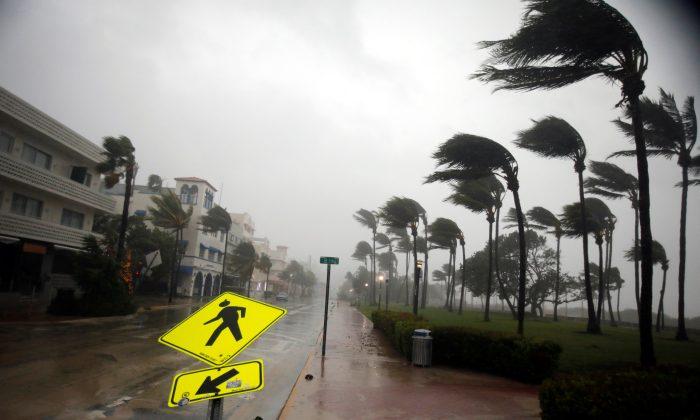FORT MYERS, Fla—Millions of people huddled in shelters or in battened-down homes in Florida on Sunday morning as Hurricane Irma, one of the most powerful storms ever recorded in the Atlantic, prepared to make landfall with 130-mph (210 kph) winds and catastrophically high seas.
The National Hurricane Center forecast potentially deadly storm surges—water driven ashore by the winds—of up to 15 feet (4.6 m). As the northern edge of the storm reached the Florida Keys archipelago off the tip of southern Florida, lashing rains and winds knocked out power to hundreds of thousands of people on the mainland.
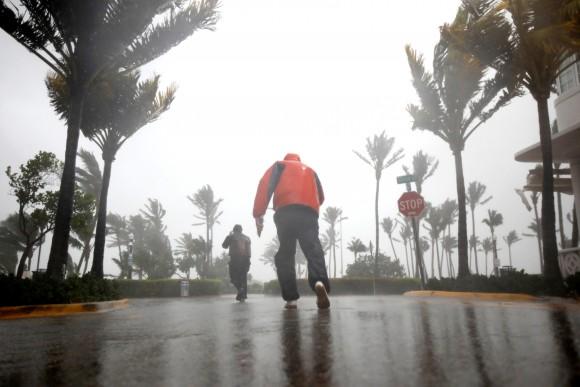
“Pray for us,” Florida Governor Rick Scott said in an ABC News interview as his state braced for the massive storm, which has already left a trail of destruction through the Caribbean.
Irma, which prompted one of the largest evacuations in U.S. history, was a Category 4 hurricane about 20 miles (30 km) east-southeast of Key West, Florida, as of 8 a.m. EDT (1200 GMT), the NHC reported.
A day after hitting Cuba’s northern Coast, Irma was on a path that would take it along Florida’s Gulf of Mexico coast near population centers including Tampa and St. Petersburg, the NHC said. Hundreds of thousands of people spent the night in emergency shelters.
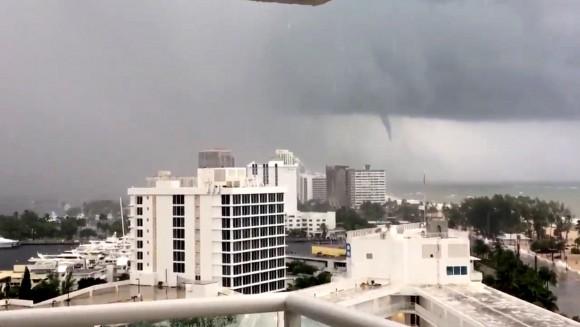
Irma was expected to roar up Florida’s western coast through the day on Sunday, with hurricane-force winds extending some 80 miles (129 km) from its center. Forecasters also warned tornadoes could form in large portions of the state.
“Take action now to protect your life,” the National Weather Service in Key West advised. “This is an extremely dangerous and life-threatening situation.”
Officials in Florida have ordered a total of 6.3 million people, or about a third of the state’s population, to evacuate, creating massive traffic jams on highways and overcrowding shelters.
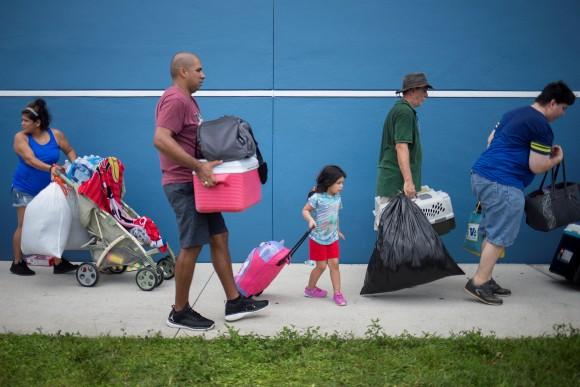
Irma, which killed at least 22 people in the Caribbean, was likely to cause billions of dollars in damage to the third-most-populous U.S. state.
Close to 600,000 homes and businesses were without power as of Sunday morning, according to utilities.
Seeking Shelter
The NHC has put out a hurricane warning and a tropical storm warning stretching through almost all of Florida into Georgia and South Carolina - an area where more than 20 million people live.Miami a Ghost Town
Tracking models showed Irma would make landfall on the Keys and head along Florida’s west coast, slamming the state that is a major tourism hub, with an economy comprising about 5 percent of U.S. gross domestic product.Amid urgent warnings from state officials to evacuate before it was too late, downtown Miami was all but abandoned on Saturday.
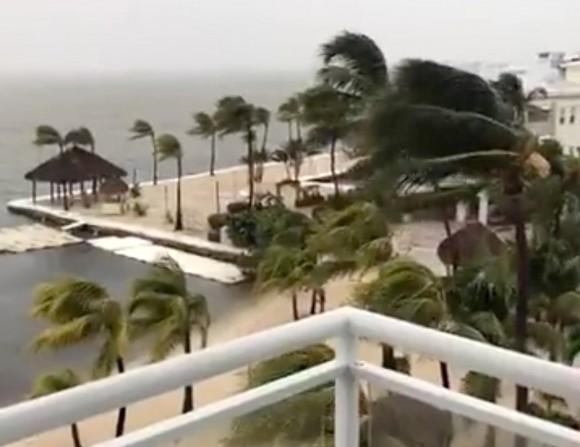
On Florida’s west coast, resident Charley Ball said he expected a storm surge to completely engulf the island of Sanibel where he lives.
“Just left the island and said goodbye to everything I own,” said Ball, 62.
In Cuba, the destruction along the north central coast was similar to that suffered by other Caribbean islands over the last week as Irma plowed into Ciego de Avila province.
It was the first time the eye of a Category 5 storm had made landfall in Cuba since 1932, state media said, and the island’s Communist government ordered the evacuation of more than a million people from its path.
